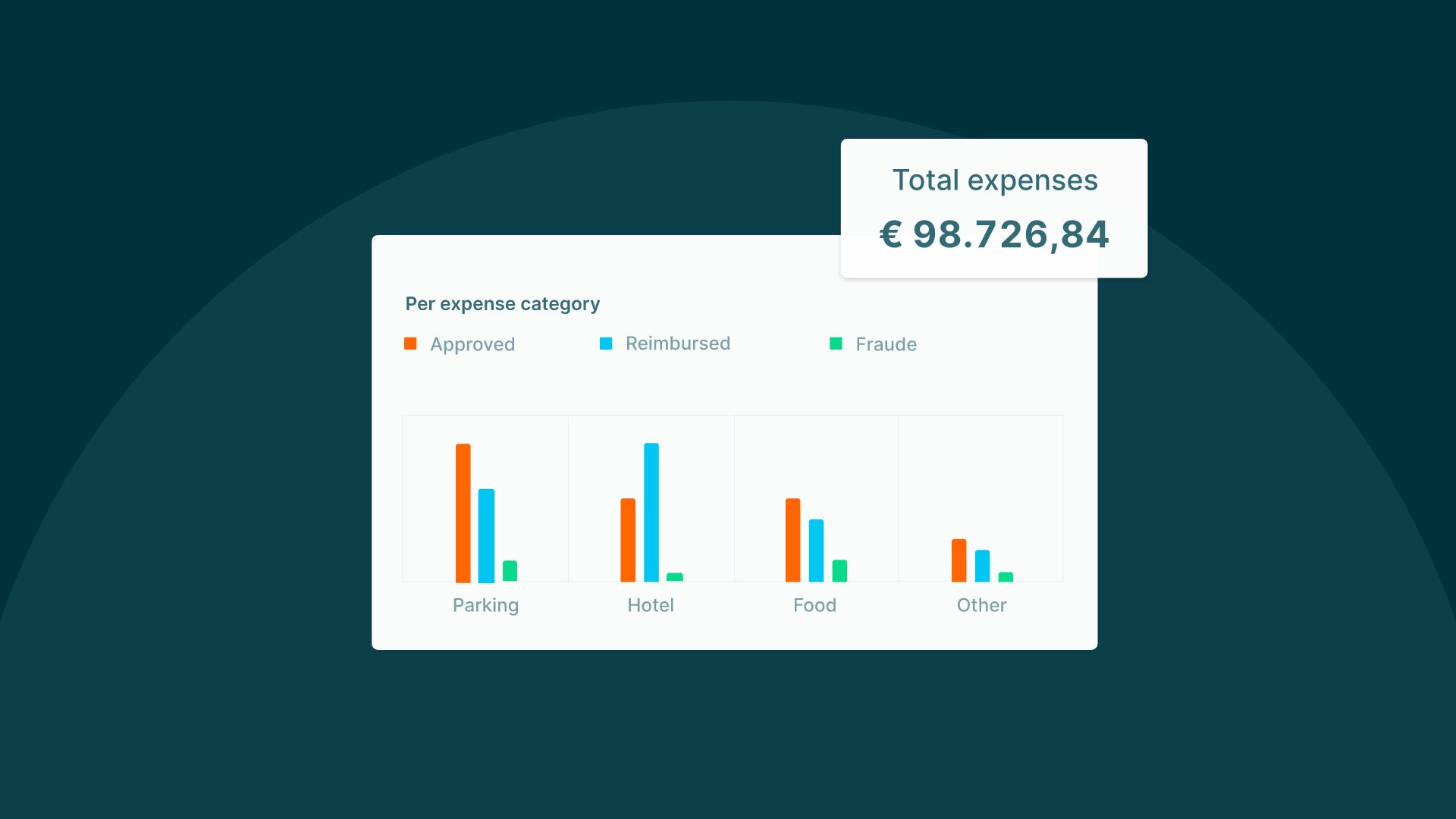Your Ultimate Guide to Creating an Effective Expense Policy
Does your organisation have an expense policy? Is it easy to understand? If you answered "no" to one or both questions, don’t worry. We have some pointers to get you started on drafting a comprehensive yet easy to follow travel and expense policy.
A written, clear and easy to understand company expense policy is crucial for any organisation of a certain size. In this article, we will explain why this is and what should feature in any effective T&E policy.
What is a business expense policy?
A business expense policy is a formal document that lists the do's and don'ts regarding work-related expenses such as allowable business expenses and maximum amounts per category of expense.
Employee expenses, such as business lunches, business trips, home working equipment, etc. represent a significant proportion of a company's total costs (sometimes up to 10% of the total turnover). It is therefore only logical that, as your company grows, the need for an expense policy grows to ensure you remain in control of costs.
Important elements for effective expense policies
While no two corporate travel or expense policies will ever be exactly the same, here are a few common principles to keep in mind:
- Create clear categories and budgets. Employees need to know exactly how much is allowed for each category. How much can a business lunch with a prospect cost? What is the maximum amount allowed for a hotel stay? Is it permitted to take a customer to the theatre or a sporting event? Be reasonable. Consistency is important here. Try not to allow any exceptions and do not treat your employees too differently unless it's warranted. The purpose of an corporate expense policy is to be objective and fair, while giving you control over your spend.
- Keep it simple. Keep it simple. That’s not a typo, it's in here twice because this key principle is very often thrown out the window. Remember: nobody will read, let alone remember, a 10-page T&E policy. Ideally, the brevity and clarity of your travel and expense policy should allow your employees to answer their own questions.
- Review it regularly. As with most business processes, an company expense policy is more effective when it is maintained and updated with rules and common practices. And this is most likely to happen if someone in particular is responsible for updating it, but also for ensuring it is being shared, understood and used appropriately.
- Know the rules and regulations. This goes without saying, but ensure that your policies are in line with your country’s rules and regulations regarding employee expense management.
These are just a few important guidelines to keep in mind. But what about the specifics: what are expense policy best practices?
What should be in an employee expense company policy?
The goal of the travel and expense policy
Transparency creates goodwill. Briefly explain why these rules exist and what the underlying motivation is. That way, both parties know where they stand.
General rules regarding business expenses
It can be helpful to you and your employees to explain to them the general workflow, approval process and basic rules relating to employee expenses.
For example, that corporate expenses can only be incurred in a business context and in principle cannot take place during the weekend. The deadline for submitting expenses and providing receipts should also be mentioned. This is to avoid expenses being submitted past the useful timeframe for VAT declarations and recovery.
Budgets and rules for each expense category or cost item
To start, we suggest you identify and name the person in charge of setting and managing the budget for each team or type of expense. This way, employees will know who to turn to with questions or when in doubt.
Ideally, your corporate expense policy should include specific budgets for each type of expense: home office equipment, transportation, lodging, meals, office expenses, and so on. However, it may not be possible for you to create such a clear list as budgets can fluctuate based on seasons, needs and strategic priorities.
Here are a few examples of rules per cost item that may work for you or could serve as a base.
Home working
- A budget of up to EUR 500 per year to improve home office ergonomics or equipment.
- A budget of up to EUR 100 per year for plants to brighten up the home office and improve air quality.
- Minimal or automated approval for home office expenses below EUR 50.
Transport
- Automatic approval of mileage expenses below EUR 100/month.
- A maximum spend of EUR 35 per rideshare ride. Any surplus is automatically rejected.
- No reimbursement for fines.
- Parking fees can only be reimbursed with proof of purchase.
Overnight stay
- Room service is never reimbursed except in the case of a mandatory quarantine undergone for business purposes.
- A maximum amount per country/city and employee title (if applicable) for overnight stays.
- Laundry services can be reimbursed for business trips exceeding 5 working days.
Meals
- All attendees must be listed when submitting the expense report.
- A maximum amount per meal (breakfast, lunch, dinner) per destination - e.g. EUR 25 for lunch in the Netherlands, EUR 30 in London.
- Any surplus will not be reimbursed.
A reimbursement timeline
Employees have the right to be reimbursed for expenses they incur on behalf of their employer in the course of doing business. Transparency will only create more goodwill in this area as well.
What is the maximum processing time? Can employees appeal a partial reimbursement? Within what timeframe?
Make sure to answer these questions - and stick to what you’ve said, or risk disgruntling your employees.
Permitted payment methods
How your employees pay for business expenses also matters. Your travel and expense policy should reflect permitted payment methods and clarify them. For example:
- Online payments. More and more expenses are paid online, and often as a recurring subscription. Think of administrative tools, a subscription to an e-learning platform, a marketing tool, and so on. Each of these online purchases has its own duration and payment term. Employees need to know if and how they can make these spending decisions and how to pay for them.
- Advance payments. Companies will sometimes give their employees an advance for expensive purchases such as international travel. How does this work in your company? What types and amounts of expenses can give rise to an advance? What happens if the employee quits in the meantime? All these questions and more must be answered clearly and concisely.
- Company card payments. Who has a company card? What can the card be used to purchase? Who is responsible if something goes wrong? These issues need to be worked out before they arise.
Conclusion
Every organisation has its own culture and way of dealing with expense management. It is important for your expense policy to take this into account and officialise reimbursement processes that work for you in a written format. Having a clear policy also makes it easier to implement expense reporting software down the line that will automate policy compliance for you and your employees.
At the same time, writing or reviewing your corporate travel and expense policy is also a time for reflection - there is always room for improvement. Being consistent in the way you write and review your policy will help you come up with a logical and coherent system that works for you, your employees and your finance department.
Share this
You may also enjoy
these related stories

Updated VAT, Mileage and Allowance Rates for 2024

The Role Of Big Data In Expense Management

The Rise of AI and ML in Expense Management
